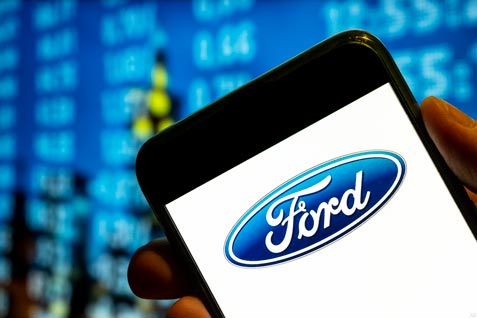Ford Earnings Show Remarkable Strength As Pro Segment Profits Explode
Ford stock undervalued with a fair value estimate of $20.

Ford Motor Stock at a Glance
- Fair Value Estimate: $20
- Morningstar Rating: 4 stars
- Morningstar Uncertainty Rating: High
- Morningstar Economic Moat Rating: None
Ford Motor Earnings Update
Ford’s F second quarter showed remarkable strength from the Ford Pro commercial vehicle segment driving adjusted diluted EPS up 5.9% year over year to $0.72, beating the $0.55 Refinitiv consensus. We raise our per-share fair value estimate to $20 from $19 on time value of money and 2023 revenue progressing ahead of our prior model.
The stock was down initially after the company reported results, despite Ford raising 2023 guidance, likely due to the company delaying its global battery electric vehicle production run rate target of 600,000 by year-end 2023 to 2024. CEO Jim Farley on the call also said Ford is flexible on the timing of this metric reaching 2 million units (previously was 2026). Farley made the changes because he is not willing to gain battery electric vehicle customers regardless of customer acquisition costs, which we think means he’s not willing to keep discounting BEVs. Ford recently cut the price of its F-150 Lightning BEV, but we are glad the firm is not willing to engage in a never-ending price war with Tesla because we don’t believe it can win that cost battle anytime soon.
The Model e segment lost $1.1 billion, slightly more than double second-quarter 2022′s loss and worse than first-quarter 2023′s $722 million deficit. Full-year outlook for the segment is now about a $4.5 billion loss from a previously expected roughly $3 billion loss and $2.1 billion loss in 2022.
Ford can handle the large Model e losses due to its cash-rich balance sheet. Cash and securities excluding Ford Credit at June 30 totaled $29.8 billion, with automotive net cash solid at $10.3 billion, though down from $12.3 billion at year-end. Ample credit line liquidity gives total automotive liquidity of $47.3 billion, which should give Ford plenty of ammunition to keep funding its BEV transition and invest in software.
Ford Pro greatly benefitted from the new Super Duty pickup and continued growth of its software services that carry about 50% gross margin. About 80% of Ford’s software subscribers are in Pro. Segment EBIT nearly tripled to $2.4 billion, beating combustion segment, Ford Blue, earnings of $2.3 billion. Pro enjoyed a $1.9 billion favorable contribution from pricing. Segment earnings before income and taxes margin rose 840 basis points to 15.3%, versus 9.2% at Blue and 8.4% for the whole company. Total company-adjusted EBIT only rose by 1.7% as the BEV segment (Model e) and Blue both saw EBIT declines from factors such as foreign currency, higher material costs, warranty, and pension.
Management raised 2023 Pro segment profit to nearly $8 billion from about $6 billion and Blue is now guided to about $8 billion from about $7 billion, contributing to total company adjusted EBIT now at $11 billion to $12 billion from $9 billion to $11 billion.
The author or authors do not own shares in any securities mentioned in this article. Find out about Morningstar’s editorial policies.

/s3.amazonaws.com/arc-authors/morningstar/222a1c0d-911c-4064-ac93-f9d4516d0a06.jpg)
/cloudfront-us-east-1.images.arcpublishing.com/morningstar/4JOND5R2SBFPZE63XWPYQDG56A.png)
/cloudfront-us-east-1.images.arcpublishing.com/morningstar/K36BSDXY2RAXNMH6G5XT7YIXMU.png)
/cloudfront-us-east-1.images.arcpublishing.com/morningstar/BG4IFJHA25B6RKD3XNUYKROBBM.jpg)
:quality(80)/s3.amazonaws.com/arc-authors/morningstar/222a1c0d-911c-4064-ac93-f9d4516d0a06.jpg)